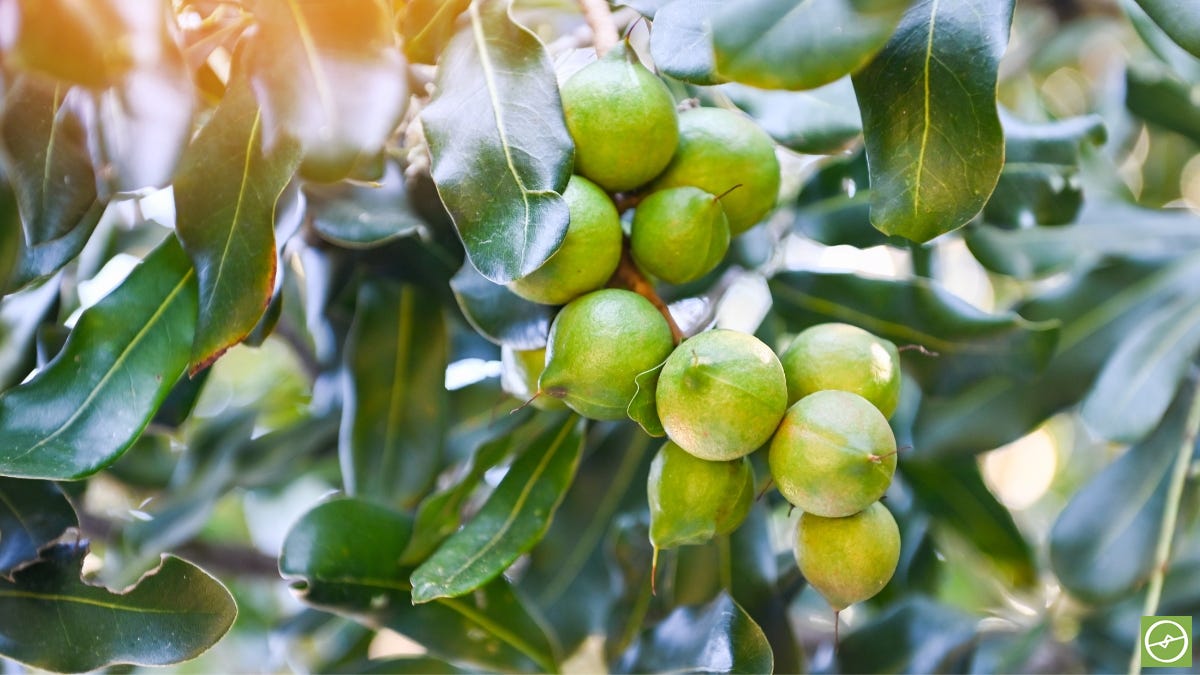World Macadamia Nut Day: Celebrating the Legacy, Cultivation & Innovation of Nature’s Gold
A celebration of heritage, health, and high-tech farming for macadamia growers and stakeholders all over the world.
History of Macadamia Nut Day: Its Origin, Founding & Purpose
World (or National) Macadamia Nut Day is observed annually on September 4 - a day dedicated to appreciating the rich, buttery macadamia nut and its cultural journey.
While the exact founding origins are informal rather than institutional, the day has become a global nod to its Australian roots, Hawaiian spread, and nutritional allure -now joined by thriving industries in Brazil, Southern Africa, and Vietnam.
Apart from the impressive macadamia blooms seen all over the southern hemisphere at this time of year, September is a time to reflect on the nut’s remarkable history, celebrate its culinary versatility, and amplify awareness of its health benefits and industry impact.
Global Celebrations: How Macadamia Nut Day Is Observed
Around the world, Macadamia Nut Day is marked with creative culinary expressions and social sharing. Popular observances include:
Baking macadamia-studded cookies, cakes, or pancakes
Hosting “nutty bake-offs,” recipe exchanges, or savoury–sweet tasting events
Sharing macadamia-themed spreads or picnic gatherings (especially in Australia)
Showcasing recipes on social media using hashtags like #NationalMacadamiaNutDay or #macadamianutday
History of the Nut: Origins to Global Staple
Aboriginal roots: Indigenous Australians enjoyed macadamias as bush food for centuries.
Scientific naming: Ferdinand von Mueller honoured John Macadam, a Scottish-Australian chemist, by naming the genus Macadamia in 1857.
Spread to cultivation: Seeds were planted in Hawaii in 1882 by William H. Purvis, initially as windbreakers for sugar cane. Commercial orchards took root by the early 20th century, with Hawaii leading production for decades.
South Africa’s rise: By the mid-20th century, macadamia production spread to Southern Africa. South Africa would later become the world’s largest producer, with pioneering work in Nelspruit giving rise to the Nelmac cultivar, bred for local conditions and forming one of the foundations of commercial success.
Further expansion: From the 1970s onward, macadamia farming spread to neighbouring African countries like Zimbabwe, Zambia, Malawi, Mozambique, Uganda, Eswatini, and more. Additionally, in areas like Brazil and Guatemala - and Vietnam and China - areas developing into important global producers.
Industry development: During the war, US troops stationed in the Pacific (especially in Hawaii) were introduced to macadamias. Post-war demand surged thanks to returning US troops embracing the nut. When they returned home, demand for the nut grew sharply, helping to fuel its rise in the post-war decades.
Over time, organisations like the Australian Macadamia Society (established in 1974) has helped to facilitate research, promotion, and trade - cementing macadamias as a truly international industry.
What Sets Macadamias Apart: Special Traits & Uses
Tree and Physiology
Macadamia trees are slow-maturing (7–10 years to bear in terms of full production, 4-7 years for initial, smaller harvests) but can remain productive for more than a century.
They thrive in fertile, well-drained soils, prefer warm climates, and are sensitive to frost and strong winds due to shallow roots.
Cultivation and Harvest
Macadamias bear the world’s hardest nut shell - requiring around 300 psi to crack. Nuts are typically collected after they fall naturally, then processed using specialised equipment. Commercial crack-out rates average around 28% kernel recovery.
Culinary and Other Uses
Their rich, decadent and buttery taste makes macadamias a premium ingredient in chocolate, pastries, seafood dishes, and dairy alternatives. Beyond the kitchen, their oil is used in cosmetics, while the trees also contribute to honey production, and ornamental value.
Health Attributes
Macadamias are high in monounsaturated fats, rich in magnesium, manganese, and antioxidants, and linked to heart health and improved metabolic function.
Read more about macadamia nutrition here: WMO Nutritional Guide
Cultivation & Farming Practices
Farming macadamias requires patience and precision:
Propagation: Grafting is preferred for consistency and quality.
Maturity timeline: Trees start bearing commercially at 7–10 years, yet remain productive for generations.
Environmental needs: Warm, frost-free climates; good drainage; wind protection; and access to reliable water supplies are essential.
Economics: Their long lead times and intensive harvest practices contribute to macadamias being the world’s most expensive nut crop.
AgTech Innovations and Macadamia Farming
Mac farming has always been about patience, but modern tools are reshaping how orchards are managed and optimised. Around the world, growers are adopting technologies that bring precision, efficiency, and resilience to a crop with exacting needs.
Smart Irrigation:
Soil moisture probes and automated systems ensure trees receive the right amount of water at the right time. Vital in drier climates on the periphery of the ideal growing conditions.
Precision Nutrition:
Variable-rate fertiliser programs, guided by AI-guided soil surveys and leaf analysis, help balance tree growth with kernel quality while minimising waste.
On-farm Weather Stations:
Real-time microclimate insights support better timing for sprays, harvests, and frost protection.
AI and Drone Analytics:
Platforms like Aerobotics use aerial imagery and machine learning to identify variability within orchards, highlight stress, and guide smart sampling for more accurate yield forecasts.
Automation and Robotics:
From nut collectors to husk removers, mechanisation is reducing labour bottlenecks - particularly in large-scale Australian, South African, and Brazilian orchards.
Regional Adoption:
Brazil: At Dois Córregos (the country’s “macadamia capital”) investment in irrigation, orchard mechanisation, and processing technology is fast-tracking Brazil’s rise as a global powerhouse.
Vietnam: The newest entrant to large-scale production, Vietnam is embracing nursery innovations, intensive orchard planning, and government-backed R&D, often integrating advanced AgTech from the outset.
Genetics and Breeding
Nelmac-2:
South Africa’s breeding legacy stretches back to the 1950s, with Llewellyn Bolt discovering two promising Macadamia integrifolia trees growing near Nelspruit.
Bolt launched a national grafting project, sending out 32,000 trees and later selecting the best 26 for evaluation, culminating in the registration of Nelmac-2 in 1973.
Today, the Nelmac line is celebrated for large, high-quality kernels, high crack-out percentages, and solid yields. Traits providing consistently reliable performance.
Nelmac-2 is often used as a reliable rootstock as well, due to its robust growth and ability to support various scion cultivars. Seedling rootstocks are known to generally outperform clonal cuttings by providing naturally superior and more vigorous root systems.
This leads to high-yielding potential and can contribute to the success of the orchard, especially in South Africa where it is a popular choice.
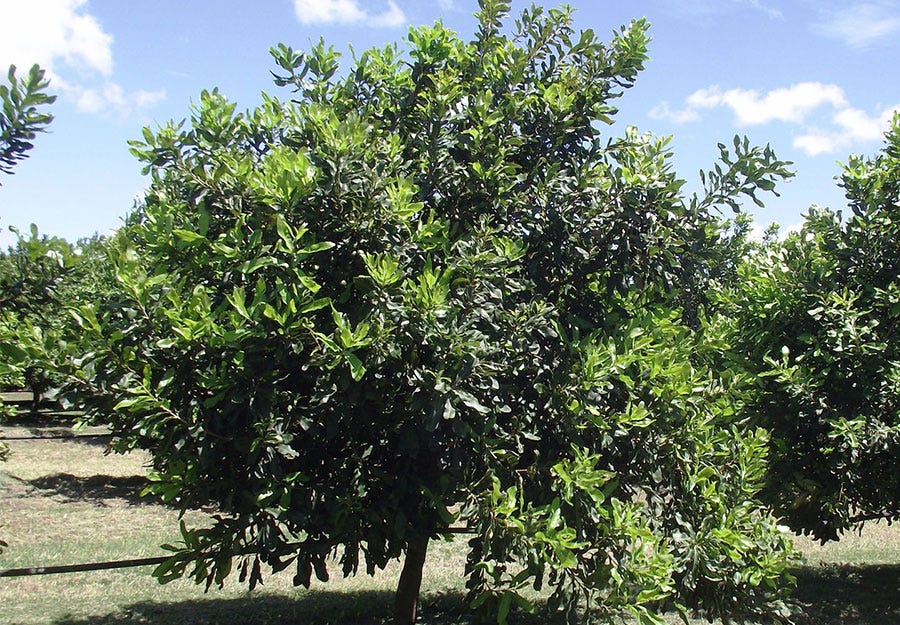
The MCT Series:
The most significant recent advance in macadamia breeding is the release of the MCT-1 cultivar, an elite hybrid (Macadamia integrifolia × tetraphylla) now being widely planted across Australia and Southern Africa.
Originating from seedling trials in Gympie and Bundaberg in the early 1980s, MCT1 was released commercially in 2017 after two decades of exceptional trial performance. It has since been planted at scale (over one million trees in Australia alone) and is regarded as a new industry benchmark.
What makes MCT1 remarkable is its precocity. Precocity simply means how quickly a tree starts producing nuts. In macadamias, a precocious cultivar like MCT1 begins yielding commercially in just 3–4 years, giving farmers an earlier return on investment.
Adding to that, MCT-1 kernel recovery rates of 40–50%, and a consistent record of high productivity could boost orchard profitability by 40–50% compared with older cultivars.
Its compact, open canopy and tolerance to wind make it suitable for a wide range of orchard systems, including replanting or block replacement.
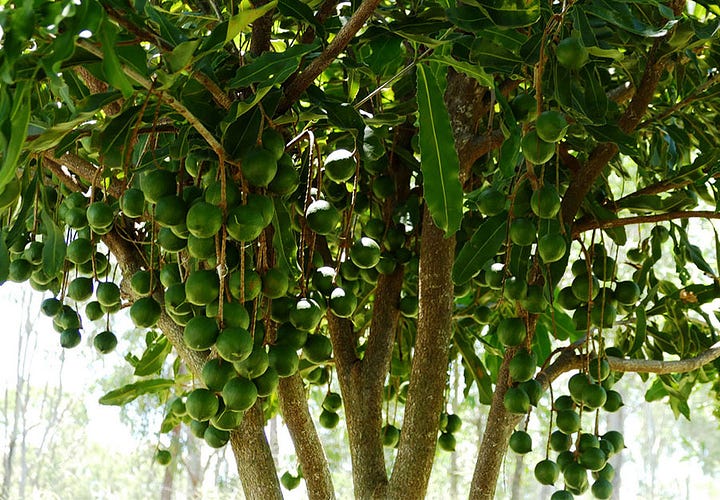

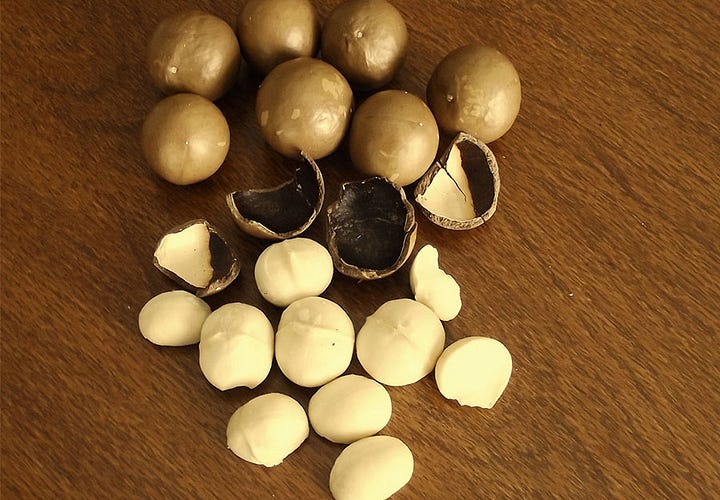
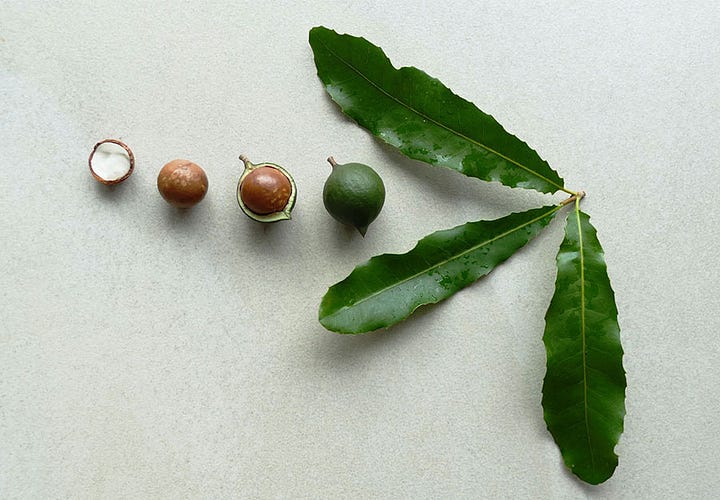
For producers in Southern Africa, where the variety is managed under TopNut, MCT1 represents a step-change in cultivar performance.
It promises not only higher yields but also improved processing efficiencies, making it a cornerstone for the next generation of macadamia orchards.
A Story Worth Remembering
As Jolyon Burnett, former CEO of the Australian Macadamia Society, reminds us in The Macadamia: Australia’s Gift to the World:
“This is a story with it all: heroes, villains, wrong turns and lost ways, new inventions, David and Goliath battles over international trade, and colourful characters – some with a utopian vision, others perhaps driven by the dream of a quick profit.”
Behind every macadamia lies a human story of resilience, innovation, and global collaboration.
Carrying the Legacy Forward
On this World Macadamia Nut Day (September 4, 2025) we celebrate far more than a delicious nut.
We honour its deep Indigenous roots, its journey to international prominence, and the dedication of farmers and innovators whose vision and persistence continue to drive the industry forward.”
South Africa’s development, alongside decades of Australian and Hawaiian research, laid the groundwork for global success. Today, macadamias are not only becoming a heritage crop of Australasia and Southern Africa, but also a rising force in areas like Kenya, Brazil, Vietnam, Zimbabwe, and more - where new orchards are contributing to the nut’s growing global footprint.
With technologies like AI-powered drones, precision irrigation, smarter nutrition strategies, and resilient new cultivars, the macadamia story continues to evolve.
The legacy is clear: macadamias are both a heritage treasure and a frontier crop for the future. Slowly and steadily carving out a bigger portion of market share in the world of nuts. And there’s room to grow!
Call to Action
Read more about the AgTech in the Macadamiasphere and how innovation is shaping mac farming in our dedicated blog section: Macadamia AgTech Articles
And explore some of the books and resources - many of which include macadamia related topics.
The thinking starts here, but the real change starts when we take action.



